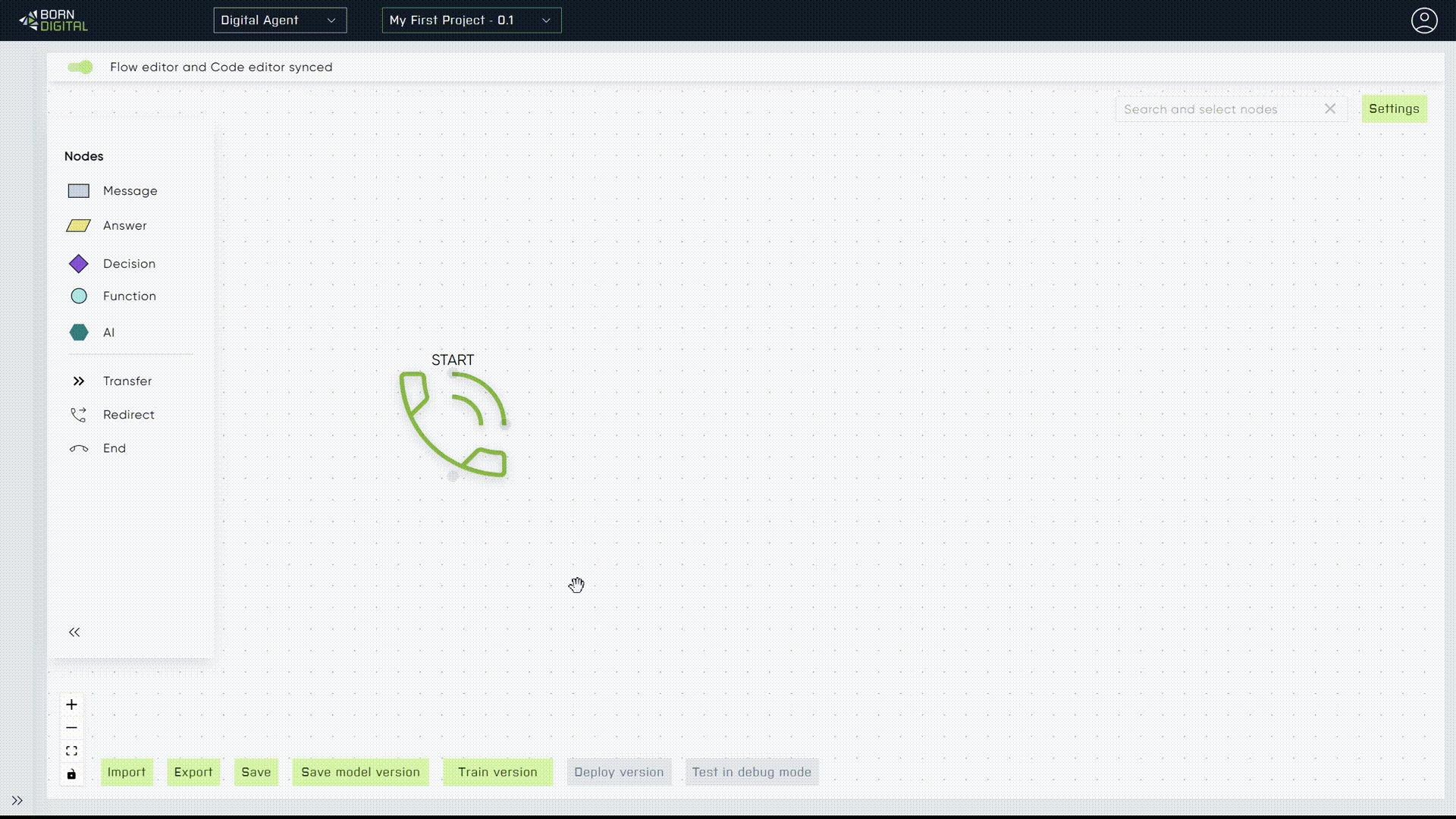FUNCTION node
The 'Function' node serves various purposes, allowing for the execution of multiple functions and interactions with backend systems.
Here's an overview of the function node configuration tab and some practical use cases:
'Function' node are versatile and can perform various tasks, including retrieving, posting, or manipulating information from backend systems. To see practical examples, refer to the chapter Creating Your First Virtual Assistant.
We will update the UX/UI of the variable dialog in near future. Stay updated!
Within this overview of the 'Function' node, let's explore two distinct types of using the function variable:
Smart Functions: These are programmed to execute specific functions, such as retrieving a particular name, fetching specific data from your sources, or obtaining the current date.
Example: 'Now' - a smart function that returns the current date.
Example: 'County' - a smart function that tracks the number of times the 'Function' node is invoked (useful in 'Decision' node).
Example: 'Value' - represents a static value predefined within the node.

Note the importance of the order of smart functions, as this dictates their execution sequence. Follow a 'first-things-first' approach to ensure the 'Function' node operates as intended.
Last updated
Was this helpful?